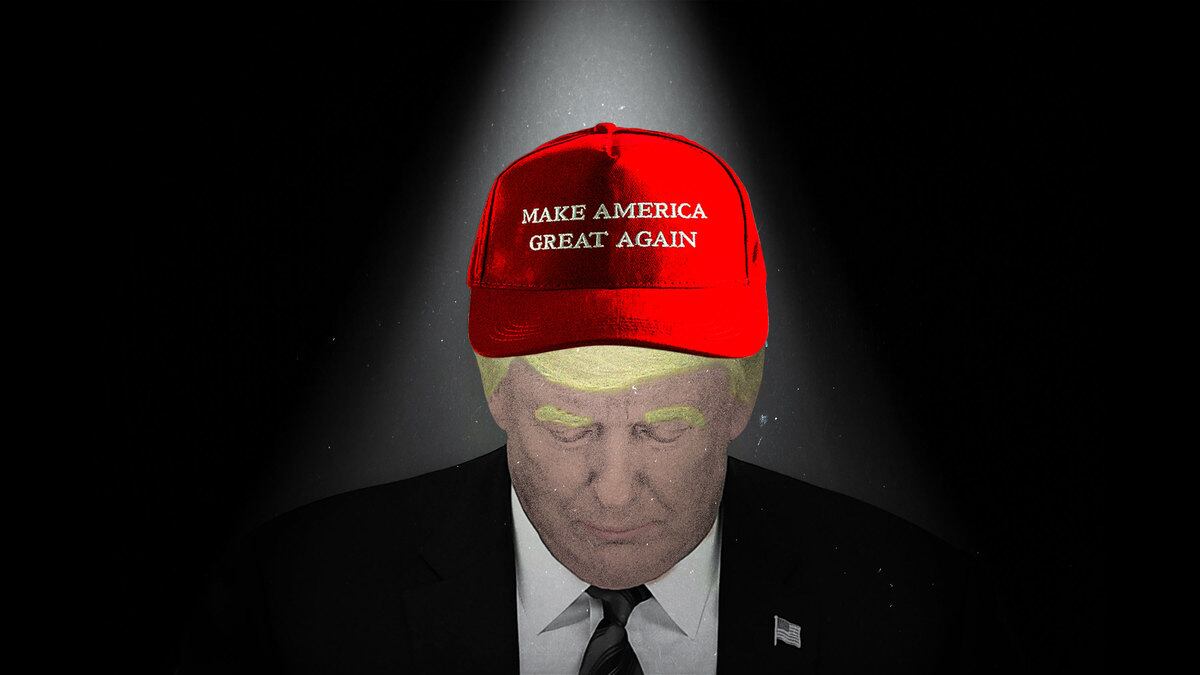Shortly after Saturday night’s less-than-packed rally in Oklahoma, President Donald Trump was handed pieces of printed paper that aides thought would cheer him up.
The pages, according to an individual involved in the matter, included a collation of various copy-and-pasted live tweets by some of the president’s most prominent allies and diehard fans lauding Trump’s speech and celebrating the event as an unmitigated triumph against Joe Biden.
The effort at ego-soothing, which came despite numerous Trump campaign and White House officials privately conceding that the Tulsa gathering had been a clear-cut debacle, didn’t have its intended outcome. The president barely skimmed the papers. And he was visibly downbeat as he rode back to Washington, D.C., aboard Air Force One, having come to the realization that—by the very metrics set by himself and his own campaign—his rally had failed.
According to three people with knowledge of the matter, the president’s mood had been foul even before he hit the stage—as he took stock of the wide empty space in the arena. Some advisers were genuinely surprised that he was able to seem as buoyant as he did during the speech itself.
Soon after the rally ended, the facade was dropped. President Trump complained to top advisers about being put in a position where the media could mock him. He ordered his team to immediately find out what went wrong. And two of the sources said the president suggested there would be major consequences for campaign staff if this wasn’t “fixed” and if he saw too many empty seats at his next coronavirus-era mega-rally.
Among various Trump associates and staff—as well as GOP veterans—the blame was directed at Michael Glassner, the campaign's chief operating officer, and Brad Parscale, the campaign manager.
“It was a disaster and I think the reality is that it's not a good way to start a general election campaign,” said Ed Rollins, a veteran Republican strategist who leads the pro-Trump group Great America PAC, who also said Trump had “no message” and was “rambling” during the speech. “If I were the president…I’d get a campaign manager who is running a campaign, not companies outside of it…My sense is [Brad Parscale’s] making way too much money…It's not my style to criticize a campaign manager, having run one myself, I know how difficult it can be, but in this case, something is not working and something has to change.”
However, multiple sources familiar with the reaction from Trump and his son-in-law Jared Kushner, who has tremendous power over the direction of the campaign, said that Parscale and Glassner's jobs were safe as of Monday.
That left Trump officials with the task of pretending that the president wasn’t pissed off at all. On Sunday, Trump campaign comms director Tim Murtaugh denounced the “trolls thinking they hacked rally” tickets, and pinned the low headcount on “media-stoked fear” for families who wanted to attend. On Monday, White House Press Secretary Kayleigh McEnany was reduced to boasting about the rally’s television ratings. And one source familiar with the situation, in trying to explain the porous attendance, was forced to concede that the campaign had made a massive mistake in fairly basic event planning operations. According to the source, the president’s team did not spend the usual amount of money doing advertising and outreach for the rally because it thought ticket demand was organically high—seemingly unaware that Trump-trolling teens and K-Pop fans and Tik Tok users were wildly and artificially inflating it.
But even with those missteps, the lackluster rally attendance came as cracks appear to be forming in one of the president’s key political assets—his formidable, and for a time unmatched, grassroots appeal—and as his Democratic rival overtakes him in an area dominated by Trump in 2016: small-dollar fundraising.
As Trump was on stage in Tulsa, his campaign filed its most recent financial report with the Federal Election Commission, revealing that it had brought in just under $25 million last month, well short of the nearly $37 million in receipts reported by the Biden campaign. The real concerns for the Trump campaign, though, were in the details. For the second time in three months, Biden’s campaign reported beating Trump’s in small dollar donations, both in terms of gross receipts—Biden more than tripled the $5.4 million that Trump brought in in May from donations of under $200—and as a share of total individual contributions. All told, 38.2 percent of individual donations to the Trump campaign in May came via contributions of less than $200, compared to 47.2 percent for Biden.
In addition to its campaign contributions, the Trump campaign leans heavily on a joint fundraising committee with the Republican National Committee that also regularly reports robust income from small-dollar donations. That committee hasn’t yet reported its fundraising totals for the second quarter of the year, though it will likely boost Trump’s small-dollar fundraising numbers considerably when it does.
A direct comparison of the two candidates’ campaigns, though, reveals that Biden has closed the gap considerably as his campaign has dramatically scaled up its grassroots fundraising.
Even as a coronavirus-induced recession hammered American pocketbooks, Biden’s small dollar fundraising has exploded. His campaign brought in nearly $20 million from donations of under $200 in March, according to its FEC filings. That was more than the Trump campaign has ever reported raising from small-dollar contributions in a single reporting period. And Biden has largely kept up the momentum. In March, an aide said, his average donation was $40; by April it was $32, and by May it was $30. The campaign had tripled the number of online donors since February.
Trump’s political machine has been driven largely by those small-dollar donors since he declared his presidential candidacy in 2015. For that first run, Trump himself provided tens of millions of dollars of his own money, but to the extent that the campaign leaned on its donors during his run against Hillary Clinton, those donors were overwhelmingly giving small sums.
That was a stark contrast to Clinton, who relied on larger “itemized” donations of more than $200. In all but one financial reporting period, Clinton’s campaign brought in less than a third of its individual campaign contributions from donations under that threshold. Trump, meanwhile, was consistently bringing in more than 60 percent of his individual donations from small-dollar contributors.
A Trump campaign official said on Monday evening, that they had "a robust digital fundraising operation built since 2016, and it has only continued to grow,” adding that the “Biden campaign is structured completely differently and the comparison disregards the tremendous amount of support we have received from small dollar donors over the years." The official noted, for example, that the totals being reflected on finance reports did not include "anyone who purchases an item from our store, or engages with one of our emails.”
Trump and the GOP’s mammoth grassroots fundraising hauls have been a great point of pride—and a significant talking point—for the president and his lieutenants, who’ve used it over and over to bash Biden as a weak candidate with severely dampened enthusiasm among even hardened Democratic voters. It’s also yet another data point that the president’s top aides say they print on paper, as they do with his fan-tweets, to hand to Trump to help stroke his ego.
For now, the president’s senior officials will also have to settle for bragging about Trump’s headcount for the online viewership.
“President Trump is eager to keep hitting the campaign trail and holding more rallies to speak directly to the American people,” Murtaugh said in a statement to The Daily Beast on Monday. “Thousands of supporters turned out in Tulsa, even in the face of media-stoked hysteria about the coronavirus and the potential for violent protests. As of Monday morning, more than 11.3 million people had watched the President’s rally online, which doesn’t even count television viewership. This is an enormous audience that Joe Biden couldn’t even begin to dream of from his basement.”








